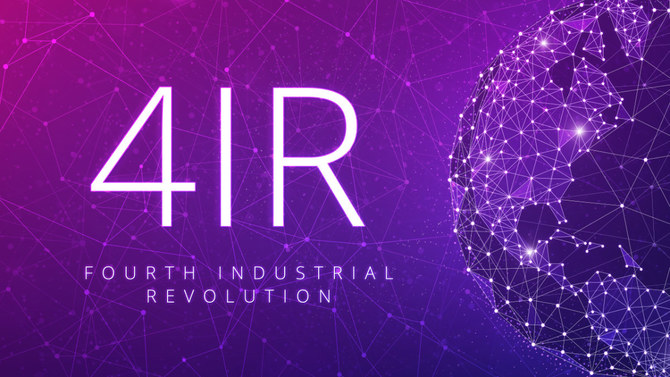Balancing act between job loss, job creation key to growth

https://arab.news/5xt9m
I received many questions regarding my last article and the relationship between 4IR (fourth industrial revolution) technology deployment and the needed balance between job creation and job loss.
Before jumping into a complex discussion about the 4IR, let’s take a step back to understand the basics of economic systems.
The development and sustainability of any economic system depend on the interplay between three key players.
First, the business owners who create wealth by making and selling goods and services. Second, the workers who help in executing economic activity in exchange for wages, and finally the government, which governs and protects the economy through policies and regulation, infrastructure development such as transport systems, and stimulates economic activity through different programs.
The creation and distribution of wealth between these three players determine the health, sustainability, and growth of an economy. A sustainable and healthy economy with maximum growth can only be achieved if the wealth distribution is optimized to benefit all players.
Let’s assume a scenario where all the business owners in a given economy succeed in fully automating their economic activities and eliminating all jobs (the potential long-term scenario when using 4IR AI and robots) and manage to influence tax laws and policies to minimize taxes paid to the government (using creative accounting and taxation loopholes).
Such a scenario would not only stop wealth distribution to both government and workers and break the economic cycle, it would destroy demand for their goods and services in their economy (we will assume no exports to clarify how an economic system works within a country).
Many business owners don’t realize that the wealth they transfer to the government through taxes and to their employees through wages is what they receive back as revenue from the economy they operate in when they sell their goods and services. This makes it clear that automation using the 4IR will help productivity and profitability for all businesses, but up to a point. Beyond this point, increased automation across the economy and the loss of jobs it causes will start destroying demand for their goods and services as we lose the balance between job loss and job creation.
Creating a policy to protect, for example, jobs from automation while addressing the need for businesses to increase productivity and efficiency through the 4IR is a critical balancing act that needs to be accomplished to achieve sustainable development and economic growth.
This is not an immediate problem that we will face in the short and medium term, but policymakers need to be aware of it as they develop long-term strategies and incentives to deploy the 4IR across the economy. Without understanding this cycle, policymakers may think that the more we automate the economy using the 4IR, the better the economy will perform with no impact on its sustainability and health at higher automation levels.
The other side of the equation in the 4IR is the workers in the economy. They may not be able to create economic activity like the business owners or regulate and govern the economy like the government, but their role in economic sustainability and growth is crucial.
It is no secret that societies with a strong work ethic and passion for learning create competitive and high-performing economies by increasing the productivity and skill sets needed for economic competitiveness.
Policymakers can help to create this culture by developing labor policies and laws that promote and allow a merit system that is fair to all parties and help to hold workers accountable for their performance and commitment and reward excellence in the workplace.
Labor laws that make it difficult to hold workers accountable for their performance can reduce the productivity of businesses and incentivize business owners to invest in automation to avoid worker problems and the cost of training and development of the workforce.
Moreover, government investment in upskilling and training programs of newcomers to the workforce can help businesses achieve their productivity targets through hiring rather than automation while lowering training and development costs.
• Dr. Mishal Al-Harbi is a senior executive and strategist at the Research Product Development Company, a subsidiary of the Saudi Technology Development and Investment Co. (TAQNIA). He has a doctorate from Texas A&M University and a master’s degree from Stanford.









































